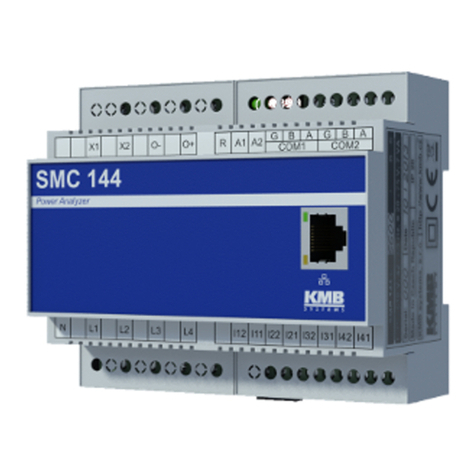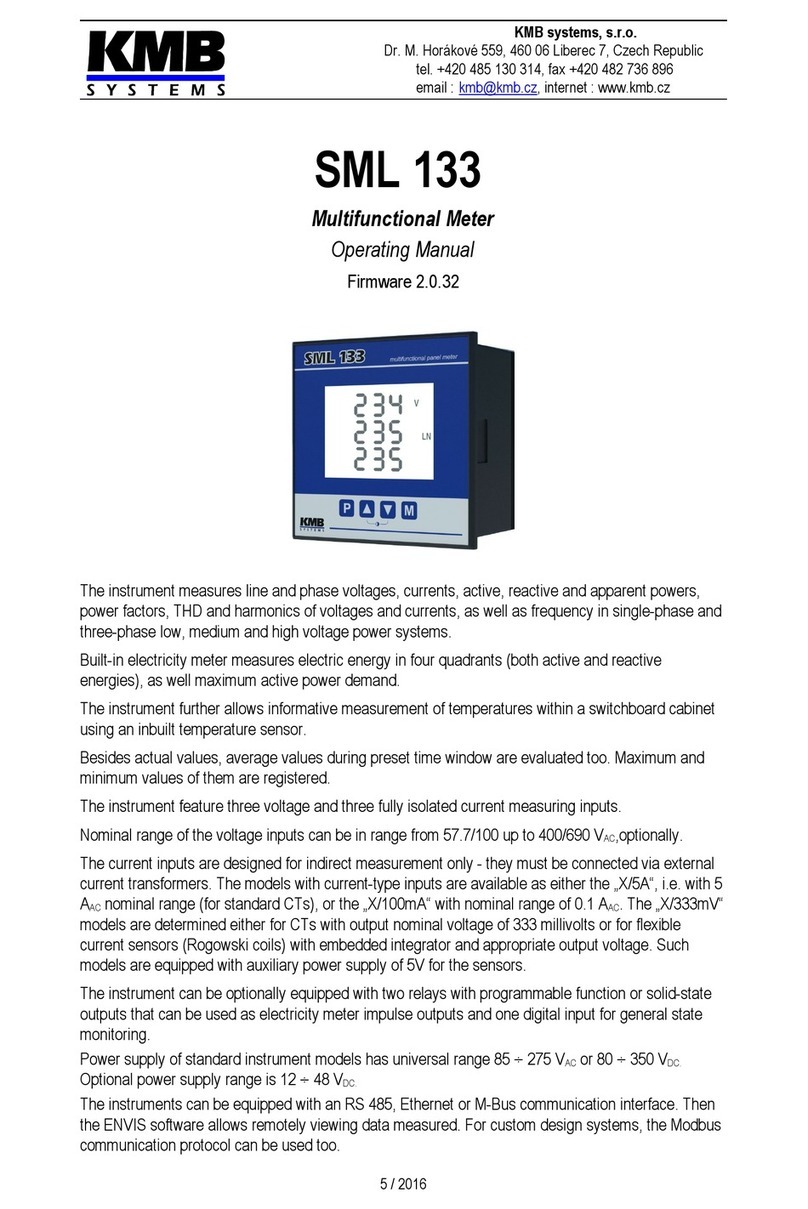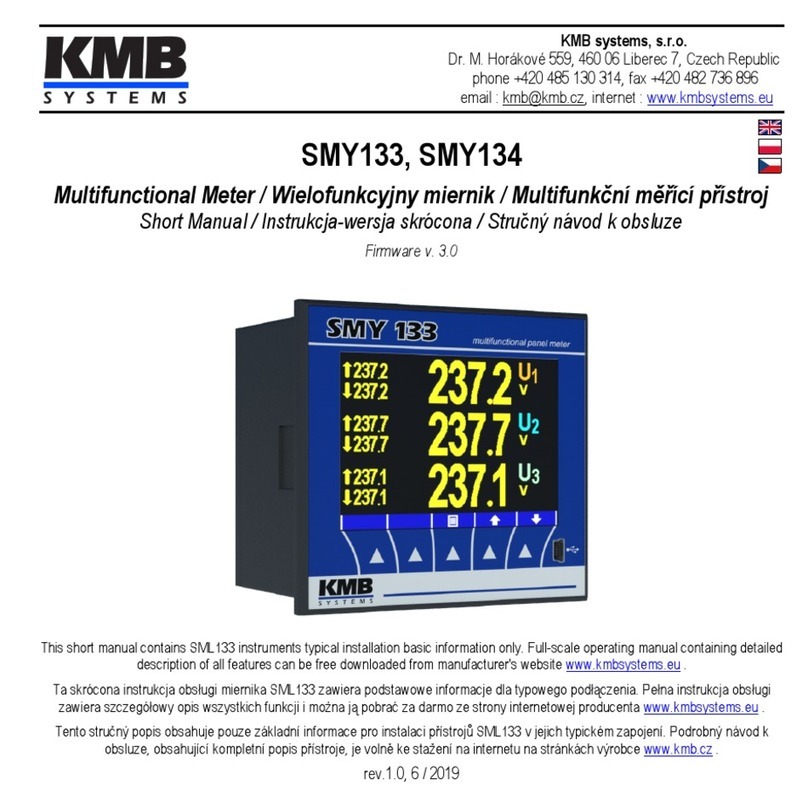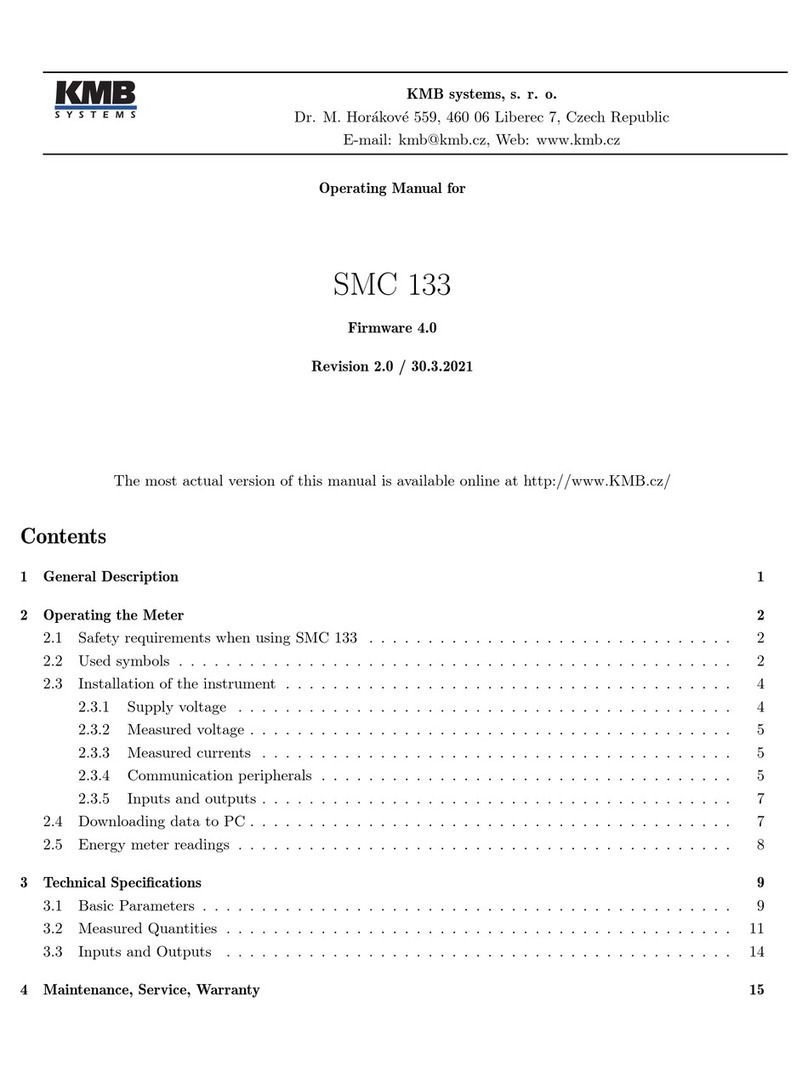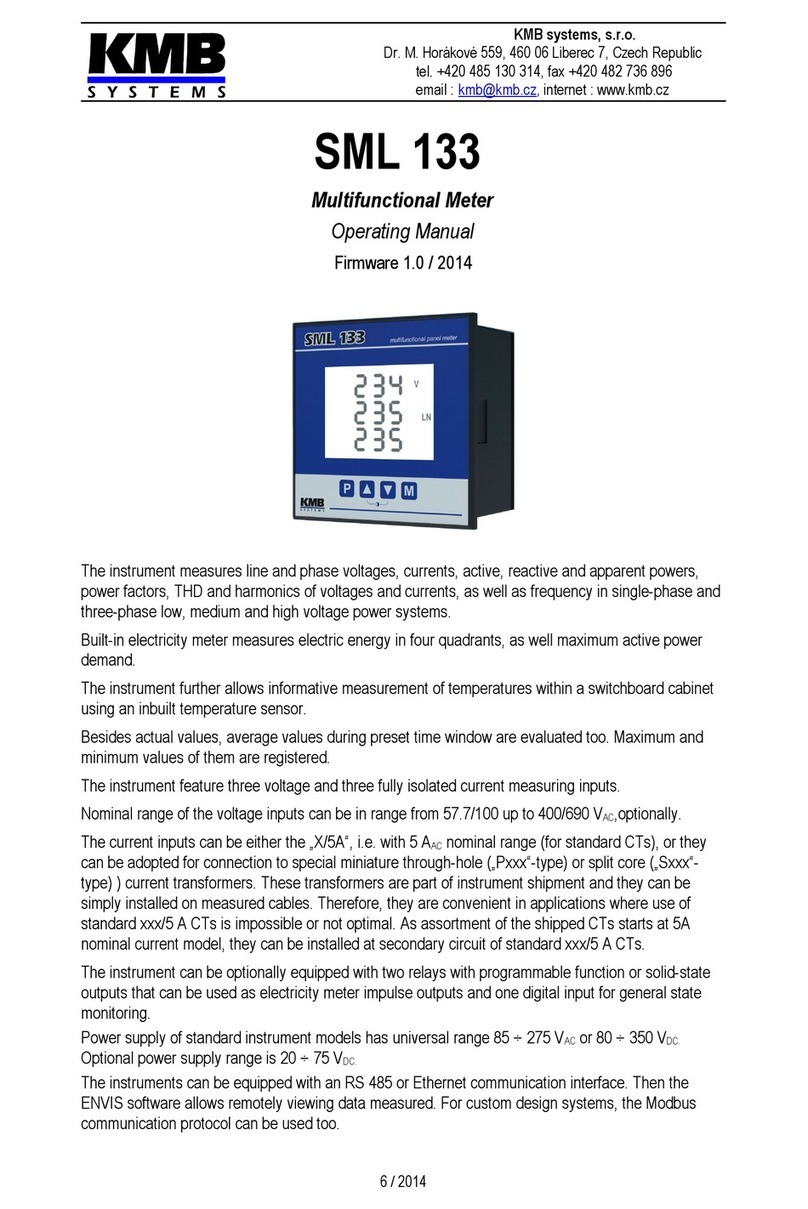2.7.1 “4E+MD” Display Mode
In this mode, first four windows contain three-phase energies of four-quadrants :
•ΣEP+ … three-phase imported active energy, indicated with Σ - kWh (or MWh or kMWh = GWh)
•ΣEP- … three-phase exported active energy, indicated with Σ - kWh and preceeding ― sign
•ΣEQL … three-phase inductive reactive energy, indicated with Σ - k Arh – L
•ΣEQC … three-phase capacitive reactive energy, indicated with Σ - k Arh – C
Each value occupies all of three display lines, 8 digits before the decimal point and one after it.
For the exaple at left, ΣEP+ = 293745.8 Wh.
The values are registered since the last clearing. To clear the energies, display any of them
and then follow the same procedure as for max/min average values. All of the energies are
cleared simultaneously ant start to count from zero again.
In the 5th window there is
•ΣMD … maximum of three-phase average active power (power demand), indicated with Σ - kW - ▲and bar
over the value
The value contains maximum of three-phase average active power since the last clearing. Averaging method and averaging
period for this value can be set regardless of the method of standard average values, described above.
Similarly as the energies, the value can be cleared independently.
If the instrument is locked, clearing is not possible
If the instrument is equipped with a communication interface, the values can be cleared remotely
2.7.2 “8E” Display Mode
In this mode, reactive energies registered separately depending on actual three-phase active power (ΣP) sign are displayed
(“six-quadrant ” mode; such format can be convenient for renewable sources monitoring, for example) :
•ΣEP+ … three-phase imported active energy, indicated with Σ - kWh (or MWh or kMWh = GWh)
•ΣEP- … three-phase exported active energy, indicated with Σ - kWh and preceeding ― sign
•ΣEQL+ … three-phase inductive reactive energy registered during the ΣEP value was positive (import);
indicated with Σ - k Arh – L
•ΣEQL- … three-phase inductive reactive energy registered during the ΣEP value was negative (export);
indicated with Σ - k Arh – L and preceeding ― sign
•ΣEQC+ … three-phase capacitive reactive energy registered during the ΣEP value was positive; indicated
with Σ - k Arh – C












